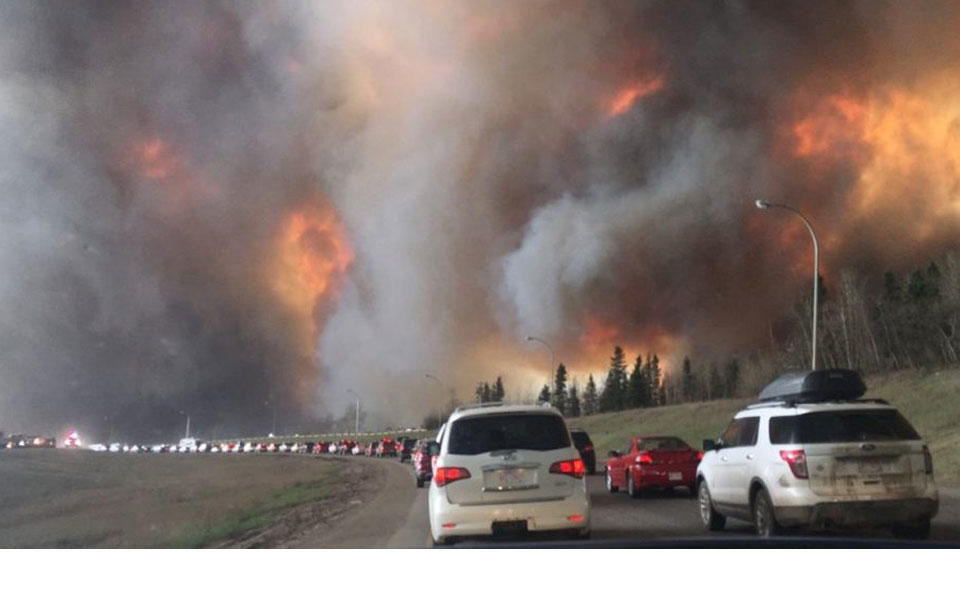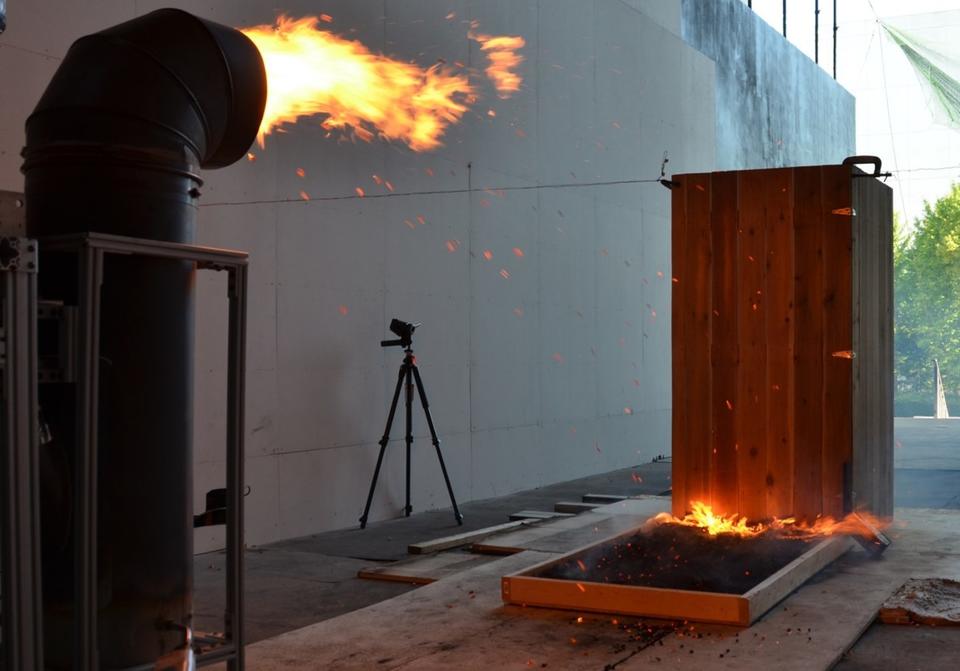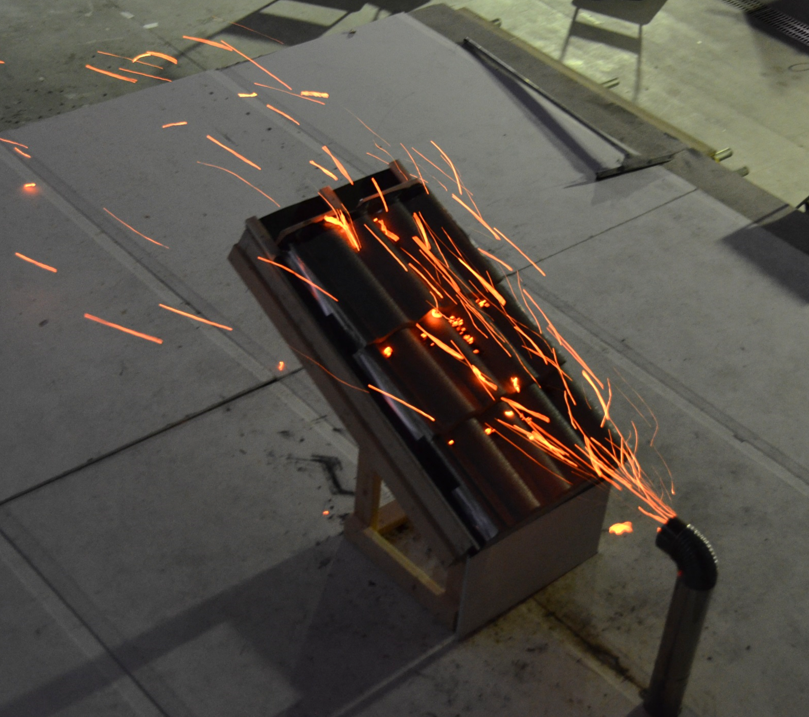Taking Measure
Just a Standard Blog

Fort McMurray residents evacuating along Highway 63 as the fire encroaches on the area.
I’m a dragon wrangler. While that might sound like something straight out of Harry Potter or Game of Thrones, this isn’t fantasy, this is serious science.
As a dragon wrangler, or more colloquially, a fire researcher, my job is to help protect people and property from fire’s devastating effects. My area of expertise is wildfires, and in particular wildfires that threaten whole communities, which we call Wildland-Urban Interface (WUI) fires. In the U.S. alone there are more than 80,000 wildfires every year. About 2 to 3 percent of those fires threaten populated areas, putting 46 million structures and over 120 million people at risk. And every year, we lose about 3,000 homes to these kinds of fires.
The “Beast” wildfire that swept through Fort McMurray, Canada, displaced 88,000 people for a month, destroyed about 2,400 homes, businesses and other buildings, and shut down almost a quarter of Canada’s oil production. For me, watching the news reports and seeing the violence with which that wildfire swept through the town underscored the need for more WUI fire research. The loss of forest, while part of the natural cycle, is unfortunate, but the loss of homes and lives is tragic and unnecessary.
WUI fires are a significant problem throughout the world. In the past few years, wildfires have affected Australia, Brazil, Chile, France, Greece, Portugal, Spain, and the U.S., and, as the Fort McMurray fire graphically illustrated, it seems like they are only getting worse.
In fact, President Obama was concerned enough that he recently signed an executive order to look into the potential impact that WUI fires could have on federal buildings.
Part of the reason that WUI fires give us so much trouble is that we don’t know much about them. Historically, most fire researchers have studied fires inside buildings. But unlike a fire confined to a house, WUI fires are unconfined and exhibit incredibly complex behaviors driven by wind, weather, the kind of vegetation, and other factors. When vegetation and structures burn in WUI fires, pieces of burning material known as firebrands (embers) are carried off by the wind and start new fires. Showers of firebrands rained down on neighborhoods during the Fort McMurray fires and are a common characteristic of WUI fires worldwide.
While the dangers of firebrand showers have been known for decades, little research has been done on them because it’s difficult to realistically replicate and measure them. To do this, me and my colleagues at NIST had to invent an entirely new experimental approach—the NIST Firebrand Generator—but we just call it the Dragon.
You can learn more about our Dragon technology by watching the video below.
We use the Dragon to generate controlled, repeatable firebrand showers that act just like those from real WUI fires, a feat for which California Fire Chief Ethan Foote and I won an annual award from the National Fire Protection Association.
Without standard laboratory test methods, fire researchers can’t evaluate or compare how well different building materials and architectural features like roofs and walls resist being ignited by firebrands. Our current understanding of how well these different building components stand up to WUI fires is still mainly based on informal reports made by untrained observers. As a result, the limited number of WUI building codes and standards we have lack scientific rigor and do not explicitly address firebrand exposure.

To develop firebrand-specific test standards, we need to design full-scale experiments that evaluate—piece by piece and feature by feature—a structure’s vulnerabilities to firebrand showers. For example, in WUI fires, firebrands may penetrate building vents, ignite wood decks and fences adjacent to structures, and blow under tile roofs, all of which could set the building on fire.
It is critical for us to understand the performance of various full-scale building components when exposed to firebrand showers so that we can zero in on these and other weak points. In turn, this will help us determine how big we need to make building component sections in order to do realistic standard laboratory tests.
Because firebrand showers are blown by the wind, and wind plays a major role in whether a structure ignites, our experiments also have to take wind into account. To do that, my colleagues and I, in partnership with the Building Research Institute (BRI) and the National Research Institute of Fire and Disaster (NRIFD), set up our first international duty station in Japan. BRI maintains one of the only full-scale wind tunnel facilities in the world designed specifically for fire experimentation, the Fire Research Wind Tunnel Facility (FRWTF). NRIFD has a smaller-scale wind facility that houses a smaller version of the NIST Dragon, which we call the Baby Dragon.
The marriage of NIST’s Dragon technology and these experimental facilities is helping us gain new insights into how wind-driven firebrands interact with individual building components and whole structures.

It’s great to see that other research laboratories worldwide are reproducing our Dragon technology. For example, the Insurance Institute for Business and Home Safety has used the NIST Dragon design to generate firebrand showers in its new wind tunnel facility, which is ideal for large-scale demonstrations. Europe’s largest wildland fire institute, ADAI, with the University of Coimbra in Portugal, has developed the Portuguese Baby Dragon, which they based on our original design.
So, while the dragons I work with might not be exactly like the ones you find in Harry Potter or Game of Thrones, I still think they're pretty cool. In particular, I’m looking forward to what they’re going to teach us about how to build more fire-resilient—you might even say “dragon-proof”—buildings.






